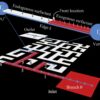If you hadn’t heard about superconductors before 2023, odds are you know what they are now. Researchers raised eyebrows early in the year with claims of operational room-temperature superconductors, though none has been substantiated, and one paper from researchers at the University of Rochester was retracted by the journal Nature at the authors’ request in November.
But the hunt for a superconductor – that is, a material that can conduct electricity without resistance – that can operate at room temperature is nothing new.
Right now, superconductors can operate only at very cold temperatures. So, finding one that could work at room temperature without needing to be kept in a cold chamber could revolutionize everything from power grids and medical equipment to quantum computing. But physicists first have to figure out how to make them work.
A Dutch physicist discovered the phenomenon of superconductivity in the early 20th century, and since then, labs around the world have tested materials that can reach a superconductive state at warmer and warmer temperatures.
So, how do these materials manage to conduct electricity without resistance, and what sorts of technological possibilities lie on the horizon, with superconductor research improving every year? Here are three stories from The Conversation’s archive that explore the history, science and future of this incredible physical phenomenon.
1. Physics behind the phenomenon
How is it even possible to generate a current with zero electrical resistance, the basis for superconductivity? In order to do so, you must keep your conducting metal cold. Really cold. Like, hundreds of degrees below zero.
“At normal temperatures, electrons move in somewhat erratic paths. They can generally succeed in moving through a wire freely, but every once in a while they collide with the nuclei of the material,” wrote Mishkat Bhattacharya, a physicist at Rochester Institute of Technology. “These collisions are what obstruct the flow of electrons, cause resistance and heat up the material.”
Superconductive materials repel magnetic fields, making it possible to levitate a magnet above a superconductor.
Normally, the nuclei of all atoms vibrate constantly, and they can bump into each other. In superconducting materials, the electrons in the current pass from atom to atom while vibrating at the same frequency as the nuclei of the atoms in the superconducting metal. This means that instead of colliding and generating heat, they’re moving in a smooth and coordinated way. And it’s the cold temperatures that allow for this coordinated movement.
À lire aussi :
How do superconductors work? A physicist explains what it means to have resistance-free electricity
2. A century of superconductivity
Mercury was the first material discovered as a superconducter, by Heike Kamerlingh Onnes in…



